Q37:
AS & A Level Chemistry - 9701 Paper 1 2016 Winter Zone 3
Questions:
37/40

Topic: CH15 - HYDROCARBONS
Solution
Solution is A

PRACTISE
Similar Questions

LEARN
Concepts with Sparky

More Questions from this Topic
Theory
CH15 - HYDROCARBONS
Chlorine, $Cl_{2}$, reacts with many elements and compounds to form chlorides.Table 2.1 shows information about some chlorides of Period 3 elements.Ta...
2024
 Spring
Spring
 Spring
Spring
 5
5
Theory
CH15 - HYDROCARBONS
CH_3(CH_2)_5CHBrCH_3 exists as a pair of stereoisomers.(a) Draw the three-dimensional structures of the two stereoisomers of CH_3(CH_2)_5CHBrCH_3. R c...
2024
 Summer
Summer
 Summer
Summer
 2
2
Theory
CH15 - HYDROCARBONS
(a) Complete Fig. 4.2 to show the mechanism for the formation of 1,2-dibromoethane in reaction 1.Include charges, dipoles, lone pairs of electrons and...
2024
 Winter
Winter
 Winter
Winter
 2
2
Theory
CH15 - HYDROCARBONS
Hydrocarbon molecules contain covalent bonds.(a) Define covalent bond....................................................................................
2024
 Summer
Summer
 Summer
Summer
 2
2
Theory
CH15 - HYDROCARBONS
Benzene, $C_6H_6$, reacts with chloroethane, $C_2H_5Cl$, in the presence of a suitable catalyst to form ethylbenzene, $C_6H_5C_2H_5$. In the presence ...
2024
 Winter
Winter
 Winter
Winter
 2
2
Theory
CH15 - HYDROCARBONS
(a) Nitrosyl chloride, NOCl, can be formed by the reaction between nitrogen monoxide and chlorine, as shown.$2NO + Cl_{2} \rightarrow 2NOCl$The initia...
2024
 Summer
Summer
 Summer
Summer
 2
2
Theory
CH15 - HYDROCARBONS
Benzene reacts with chlorine gas to form chlorobenzene. This reaction can be described as the reaction between benzene molecules and $Cl^+$ ions. The ...
2024
 Winter
Winter
 Winter
Winter
 2
2
Theory
CH15 - HYDROCARBONS
Benzene, C_6H_6, reacts with chloroethane, C_2H_5Cl, in the presence of a suitable catalyst to form ethylbenzene, C_6H_5C_2H_5. In the presence of the...
2024
 Winter
Winter
 Winter
Winter
 2
2
Theory
CH15 - HYDROCARBONS
(a) (i) Define addition reaction.........................................................................................................................
2023
 Spring
Spring
 Spring
Spring
 2
2
Theory
CH15 - HYDROCARBONS
(a) (i) Give the systematic name of D....................................................................................................................
2023
 Winter
Winter
 Winter
Winter
 2
2
More Questions from year 2016
Theory
CH2 - ATOMIC STRUCTURE
(a) Complete the table to show the composition and identity of some atoms and ions.[Table]name of element | nucleon number | atomic number | number of...
2016
 Summer
Summer
 Summer
Summer
 1
1
Theory
CH4 - STATES OF MATTER
D, E, F, and G are four consecutive elements in the fourth period of the Periodic Table. (The letters are not the actual symbols of the elements.)D is...
2016
 Summer
Summer
 Summer
Summer
 1
1
Theory
CH10 - GROUP 2
The elements in Group 2, and their compounds, show many similarities and trends in their properties.(a) Magnesium, calcium, strontium and barium all r...
2016
 Summer
Summer
 Summer
Summer
 1
1
Theory
CH14 - AN INTRODUCTION TO ORGANIC CHEMISTRY
This question is about molecules with molecular formula $C_4H_8$.(a) Give the structures of a pair of **positional** isomers with the formula $C_4H_8$...
2016
 Summer
Summer
 Summer
Summer
 1
1
Theory
CH22 - ANALYTICAL TECHNIQUES
(a) Complete the diagram to show the mechanism of reaction 1. Include all necessary charges, partial charges, lone pairs and curly arrows.H3C—C—Br...
2016
 Summer
Summer
 Summer
Summer

Theory
CH2 - ATOMIC STRUCTURE
(a) Complete the table to show the composition and identity of some atoms and ions.[Table_1]name of element | nucleon number | atomic number | number ...
2016
 Summer
Summer
 Summer
Summer
 2
2
Theory
CH5 - CHEMICAL ENERGETICS
The elements in Group 17, the halogens, and their compounds, show many similarities and trends in their properties. Some data are given for the elemen...
2016
 Summer
Summer
 Summer
Summer
 3
3
Theory
CH6 - ELECTROCHEMISTRY
Acidified potassium dichromate(VI) can oxidise ethanedioic acid, $H_2C_2O_4$. The relevant half-equations are shown. $$Cr_2O_7^{2-} + 14H^+ + 6e^- \r...
2016
 Summer
Summer
 Summer
Summer
 2
2
Theory
CH22 - ANALYTICAL TECHNIQUES
This question is about molecules with molecular formula $C_4H_8O_2$.(a) Give the structural formulae of the pair of extbf{chain} isomers with the for...
2016
 Summer
Summer
 Summer
Summer
 2
2
Theory
CH17 - HYDROXY COMPOUNDS
A reaction sequence based on propan-1-ol is shown. (a) Reactions 1 and 2 can both be carried out using the same reagents. (i) Identify suitable rea...
2016
 Summer
Summer
 Summer
Summer
 2
2




 Share
Share




 Previous
Previous




